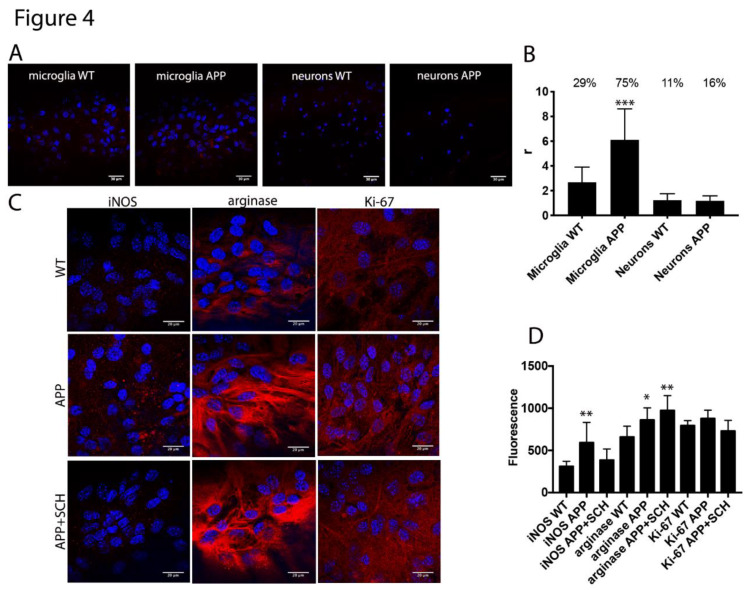Figure 4.
Microglial markers in primary cultures from APPSw,Ind mice. In (A,B), proximity ligation assays (PLAs) were performed in microglial and in the hippocampus neuronal primary cultures of control (WT) and APPSw,Ind mice using primary antibodies specific for A2A and NMDA receptors. In all cases, the cell nuclei were stained with Hoechst (blue). The confocal microscopy images are shown (superimposed sections) in which the heteromers appear as red clusters (in neurons or microglia). Scale bars = 30 μm (neurons and microglia). The bar graph (B) shows the number of red dots/cell (r) and the numbers above the bars indicate the percentage of cells presenting red dots. Values are the mean ± SEM (n = 6). A one-way ANOVA followed by Bonferroni’s multiple comparison post-hoc test were used for statistical analysis (*** p < 0.001, versus WT -control-). In (C,D), immunocytochemical assays were performed in the primary cultures of microglia APPSw,Ind mice or control (WT) animals pretreated or not for one week with the A2AR antagonist SCH-58261. The staining was performed using the antibodies that detected either arginase-1 marker, the antiproliferation cell protein Ki-67 or nitric oxide synthase and a Cy3-conjugated secondary antibody (red). The fluorescence was quantified in all the panels using the Fiji program and normalization by cell number. Representative images in all conditions are shown in (C). A one-way ANOVA followed by Bonferroni’s multiple comparison post-hoc test were used for statistical analysis (* p < 0.05, ** p < 0.01; versus WT).

